This is a question asked in an interesting debate on Facebook along the lines of uplands and their appropriate maintenance with regards to grazing. There are several fascinating projects and opinion pieces that were linked to, including the polar opinions of Rebecca Hosking of Village Farm, and George Monbiot with his articles for the Guardian and his book Feral.
‘What’s best for the uplands?’ is a seriously complex subject. Firstly, the term ‘uplands’ is too broad a brushstroke. Within the uplands there are many different ecosystems depending on previous land use, climate, altitude, soil type, water catchment etc. etc. Then you have to add the people – if the community doesn’t want change, have fun trying to plant trees. The economics of each area will differ, depending on population concentration and how they get their money – not everyone is a sheep farmer. It is also not all the sheep farmers’ fault. Have a look at Feral by Monbiot for some interesting research on the maintenance of uplands from an environmental policy point of view, choosing wildly inappropriate species to act as indicators of healthy upland management. Then there are the estate owners, especially in Scotland, that encourage high deer populations for shooting, and the monoculture of grouse farms on the moors where they burn everything and kill the predators that would otherwise eat the wild chickens people pay to shoot.

BUT is it our right to dictate what happens to these areas anyway? Who are we to tell the uplands what is best for them? From a deep ecology outlook you’ve got to remove the anthropocentric focus while still including humans as a species that is part of the local ecology. In that case it’s not what we do about the uplands, it’s what the ecosystem does for itself. You could potentially create a system where we are able to reforest great tracts of land, but humans will want to use it and as soon as profit twinkles, the lot will disappear – there is no profit in the natural world, it is a fiction of capitalism that encourages the use of someone or something else at that thing’s own expense. So perhaps shallow ecology – where we boost biodiversity for economic gain rather than because it is fundamentally right to allow other species the right to thrive. How far do you go? Where should you make the compromise? Do you exclude humans from the wild areas, pen us into the cities? Or do you attempt a hearts and minds campaign to rewild the humans too – if they love it, they will protect it, and there’s plenty of evidence that says we need to be connected to the land to be happy, healthy animals. All these areas need to be looked at in order to answer the question ‘What is best for the uplands?’
And then we should do it for the river basins, the forests and woodlands, the lowlands, the sea. Big job, eh! As for research into the simple view of ‘plant trees and all will be well’ search ‘Welsh farms plant lots of trees’ and there’s a few news articles on the financial buffer and shelter benefits. There is also an article in Farmers Weekly titled ‘Grow trees, not sheep for better return from Welsh Uplands’. Sadly, if we need the trees to stop the flooding that damages our economy – we are going to have to plant them ourselves, because the uplands are so bare the ability for the ecosystem to recruit species enough for succession to occur is going to take an awfully long time. Given how degraded the environment is from what it was, there isn’t the species reserve to repopulate the areas as they were before so a new climax community will emerge. But we’re fresh out of climax community predators so herbivores are still going to end up dominating the ecosystem – eating all the trees. So unless we behave like the predators and cull the herbivores, the forested dream will remain just that. Have a look at Yellowstone’s reintroduction of wolves.

If you want to be a sheep farmer (i.e. the predator), on a large scale, it is very, very hard to make a living. It is common knowledge that without subsidies there would be no sheep – especially in the uplands where the focus is on maintaining traditional livelihoods, not exactly on turning a profit. So Brexit is going to have a fascinating impact on how land is managed, but we all know there’s no research happening there… but there is the new Food Policy from Simon Fairlie and the guys at the Landworkers Alliance. Simon Fairlie has also done some excellent research for his book Meat: A Benign Extravagance, and his article on taxing meat has some really good links for reference points. On the whole though, if you’re a smallholder with a little bit of uplands, plant native trees, leave bits to go back to nature, encourage native wildlife. There’s lots of circumstantial evidence of forest gardens i.e. orchards or silvo-pasture with bees etc. providing a decent income, however when compared to high intensity farming they fall short, as the inputs vs outputs are wildly variable. A good study was done by Bethan Stagg at Schumacher College with Dartington to compare the two farming systems side by side, which is worth a peruse if you are interested.
Do you think that in the long-term, for the sake of ecology, plus small farm incomes, it would be a good idea to try to find ways to allow forests to come back to (most) hills? On the discussion it was put forward that allowing forests to come back to ecosystems would require fencing as is often found in places such as the New Forest where enclosures exclude the browsing ponies and deer that would otherwise eat the trees.
Fences imply control and we have proven time and again that humans cannot create a representative ecosystem by ourselves. Fences will prevent other species from accessing the area to fill niches that would support faster regeneration. Fencing anything in or out adds a lot of maintenance (i.e. money) too.

There have been various reports comparing the incomes of upland farmers in Scotland and Norway – where there is much more woodland, and farmers fare better. Their disparate incomes could have something to do with Norwegian agricultural policy. In Norway, all their food comes from Norway and only if they run out will imports be sought – and it’s the farmers who control that. In Scotland they are subject to the highly skewed land subsidies etc. which favour bare agricultural land and not forested land. There are massive caveats on how many trees you’re allowed on the land you are claiming subsidies on. We came a cropper with it at our farm – we desperately needed trees for shelter as the land is incredibly exposed BUT we couldn’t claim the subsidies we needed to fund our regenerative works if we planted them… bit of a Catch 22 really.
Long term, we all need to work towards regenerating landscapes, and that absolutely means trees in the right places. Changing the subsidy schemes to help farmers pay for the ecological changes they need to make, that won’t necessarily benefit their bottom line, is possibly the only way to do this – this means expanding on the Pillar 2 payments, however all the wealthy landowners that simply get paid for owning land might have a problem with those changes post Brexit (especially as they are the ones dictating all the policy).
We also need to be wary of shifting baseline syndrome. Sustainability isn’t enough – sustaining a broken system is just silly. We need to regenerate, not sustain, and we need to look beyond the 1970s when many of the first species counts were conducted for comparison against today’s losses. So many conservation projects try to return the land to what it was – what it was when? 10 years ago, 50 years, 10000 years? What we need to do is look forward at what it could be now. With climate going the way its’ going the climax communities are going to be very different – so re- establishing forests in the uplands needs to take that into account too. If we are going to get involved, we need to pick species very carefully so that in 20 years time our investments won’t be lost because the temperature or rainfall has shifted.

However the solution to land management is not an either/or, its an ALL. Its not about fences, or saving areas to be ‘representatives’ of certain habitats, about saving traditional farming methods or preserving the perceived ‘rights’ of the wealthy to enjoy countryside pursuits.
On a larger scale, for working farms having to turn a profit, there is a wonderful concept called Wilderculture, pioneered by Caroline Grindrod of Roots of Nature, and Primal Meats, that aims to create a way of managing land to encourage the regeneration of ecosystems while supporting an income for the people involved too.
Wilderculture is new and it’s different. It’s not just conservation, it’s not just farming, it’s not just wild game management and it’s not just rewilding; it’s completely and utterly all of it; an integrated approach which includes people in this mix too. Wilderculture is a holistic land management strategy that aims to rebuild an ecosystem for the benefit of the entire system instead of simply just one part – be that human profit or nature conservation.
Conventional conservation and farming both involve managing an ecosystem to ‘hold’ it in a state, preventing its natural succession towards woodland in order to promote the species they want. Conservationists usually prefer a wildlife species or habitat, and farmers prefer livestock or crops. Farmers sell their ‘species’ for money, and conservationists mostly fund their work through donations. Unlike a machine with cogs and wheels that can be replaced when they break, an ecosystem is self-organising and complex so holding natural processes back takes a lot of energy in the form of money or management and more often than not doesn’t do what we expect.
The holistic management aspect of Wilderculture makes it a highly practical systems management framework developed for working with complexity – you know, like dynamic ecosystems and people who won’t fit into our plans. It’s a set of tools, planning processes and systems that help us make great decisions that keep us on track. Most decisions we make these days tend to be in response to a problem and rarely address the root cause, this is how we often wind up with results we didn’t plan for. Treating the symptoms instead of the sickness will never heal the land and its peoples.
Methods such as this are a great step forward in an era where looking after our environment is becoming so crucial. Without the support of government infrastructure it is up to pioneers and entrepreneurs to solve the problems we are facing and encourage change from the roots up by demonstrating their successes.

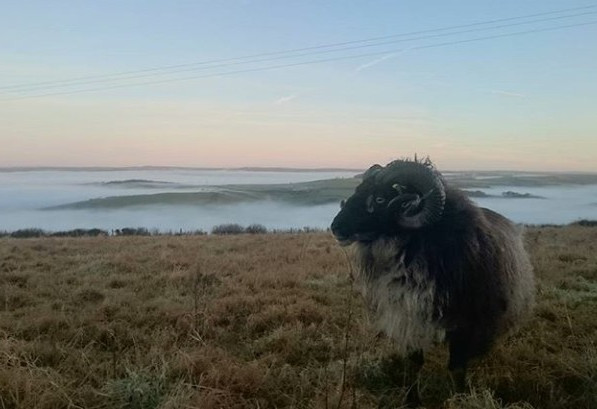
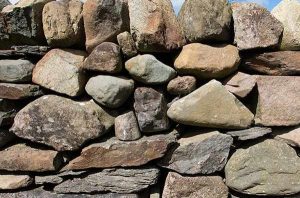

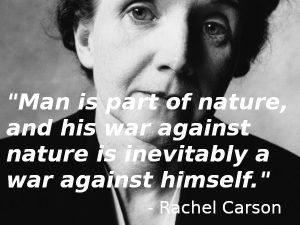
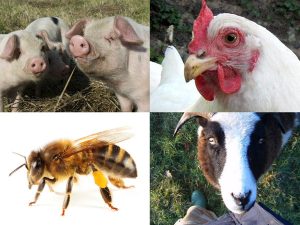

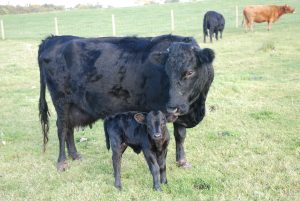
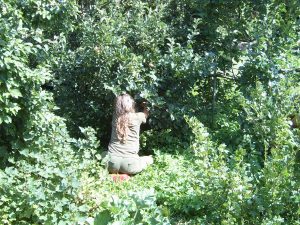

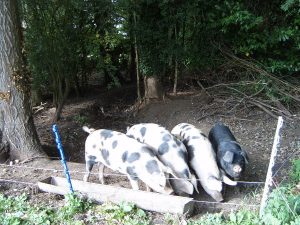
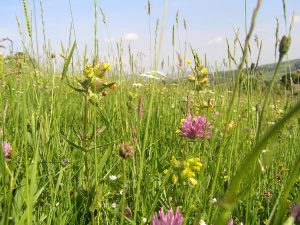

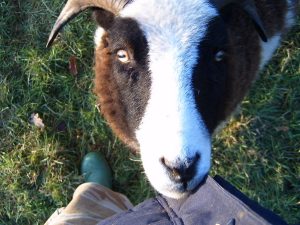

19 Comments
Hi Emma
Wouldn’t reforesting the uplands mean that a lot more resources could be harvested (meaning more income for hill farmers)? For example – timber, firewood, charcoal, tourism, hunting, wild meat (in the absence of top predators), farmed meat (pigs can be run in woodland), wild food etc. – and at the same time providing habitat, carbon sequestration, holding soil and preventing flooding.
Reforesting would be a slow and difficult process, but ultimately worth it, surely?
Plus do you have a link to Bethan Stagg’s report?
So, imagine you are a sheep farmer with access to a few thousand acres of uplands. How much money do you think you have? As a sheep farmer in Devon, we were offered a grant of £22k to plant trees on our 170 acres BUT we couldn’t claim that money until we had planted all the trees in the agreement. So firstly, we had to get together the capital outlay ourselves. The money we could reclaim would cover our time (which we had very little of as full time farmers), and the outlay for the thousands of trees, guards and gates on our enclosures to keep our sheep out (so we lost a few acres of grazing in each field, meaning less sheep). Those lost acres meant our subsidy went down, you can’t claim for areas that aren’t grazing, so overall we lost out yearly in other areas. We wanted the trees to provide desperately needed shelter, so there was no shelter for them, so the trees we managed to plant grew very very slowly. We anticipated that any revenue that could be taken from them would be in the next generation’s lifetime. And for us, with no children on a rented farm on a short lease, there seemed little point to this in the name of profit. We did however, desperately want to improve the landscape, to increase biodiversity and sequester more carbon, and do our bit for future generations, demonstrating to others that it can be done. We needed the income of the sheep to begin to fund our regeneration of the land, AND we needed the support of the general public who needed to pay a premium for sheep raised in an environmentally conscious way so that we could put money into our regenerative projects. BUT with the economy as polar as it is, there are an awful lot of people who just can’t afford that extra, seeing it as a luxury instead of an important agricultural paradigm shift.
The slow and difficult part is always the challenge when it comes to replanting/rewilding/reforesting an area for use of resources. I don’t know the exact figures for costing a reforestation project but I expect the inital outlay for trees, guards, fences to keep herbivores out until the trees are established etc. would cost significantly more than the resources harvested in say, 20-30 maybe even 100 years. Establishing trees in areas with no shelter can take considerably more time than in an area that already has some cover. Naturally occuring succession takes a long time because the environment needs to be slowly prepared for the establishment of the climax community. Scrubland helps protect the young trees from the elements while they establish strong root systems that will keep them healthy. The scrubland (bushes and grassland) provides food for the species that would otherwise graze all the trees and in every ecosystem there is an enormous attrition rate, something not taken too kindly when each sapling has to be paid for…
Not only that the soil communities change over time too. A grassland microbial community is radically different to that of an establishing woodland and it takes time for it to change from one to the other. Grasslands are characterised by short lived species, both bacterial and fungal, whereas wooded climax communities are characterised by complex, longlived communities. This can be replicated with the addition of mycchorizal treatment on the roots of planted saplings but nothing we can do compares to a naturally established system. Also, the farmer who is planting the trees and doing the work of maintaining them, is unlikely to see financial benefit from the important flood prevention his upland forestation work has provided. There would need to be some sort of recompense elsewhere in the system for this important service, i.e. through the subsidy system.
I am by no means suggesting it is an impossoble feet. There just needs to be considerable change in the system to allow it to happen. It is not a case of whether foresting is right or wrong – of course creating natural climax habitat is the best option for every ecosystem. The issue is Who will pay for it? Because the only way it will stay as a climax community is if balance is enforced when we humans come and reap the profit, and sadly balance often means less profit. Can we be less greedy, for the sake of the environment? Can we put something back, give something without the need to get something in return?
I fundamentally believe these changes need to happen if we are to pull back the environment from its headlong rush to oblivion at the hands of the humans. But I am also chronically aware of the effort that needs to go into changing these systems, and ultimately, who the decision makers are.
Here’s the link for Bethan’s summary poster which has some great graphics for comparison of the ‘conventional’ vs ‘forest garden’ approaches to food production.
https://www.ipcuk.events/sites/default/files/Bethan%27s%20forest%20garden%20poster.pdf
Thanks Emma,
So the idea’s good, but the means of implementation (which probably means the political will) is close to non-existent?
‘creating natural climax habitat is the best option for every ecosystem’ has always been my position.
Not an upland estate, but an interesting case study for rewilding with examples of revenue streams that enable landscapes to be allowed to regenerate naturally https://knepp.co.uk/
The difference with many of these rewilding projects is they are starting with areas that are already wooded in part so species are present in order to spread if allowed, unlike the uplands where an entire ecosystem shift would be needed at additional cost. But a good start 🙂
Interesting, but the ownership structure is not good, and I’m not sure it lends itself to smallholders who haven’t inherited 1600 acres. I think you’d need to be in pretty special circumstances to be able to afford to do that. Maybe, in time, co-ops could start to own more land, and have some wild land as part of the deal. But then there’s the burgeoning population. I can’t see how we can afford not to maximise yields, but at least leaning towards this style of farming might mean we can slow down soil erosion and biodiversity loss. But small-scale, organic and producing for local markets directly will maximise yields I think.
Interesting also that she’s saying that the UK would never have been covered in trees because there were always large herbivores clearing different habitats.
The problems associated with farming and habitat restoration all come back to the issue of the instigators being unwilling or unable to invest in infrastructure from which they will never benefit. It’s not that farmers don’t want to put in place long term investments to help others further downstream, it’s just that society believes it deserves these things for free because it was our ancestors, not us, who are responsible for and benefitted from the changes. Equally it will be our descendants who will benefit from any restoration in the future. We are living in the lost generation, dealing with the fallout from previous generations while expected to fix these problems for future generations. And of course, pointing out these problems is a career in itself. One might say that it is the commentators who are the only ones benefitting from the present situation. There’s more than one way to exploit a landscape.
Not everyone takes the same attitude. We planted 150 trees to provide shelter on our 4 acres, spent £300 on fencing to keep some of those trees from being eaten by sheep and we get no grants. Our neighbours make our efforts look puny – they planted (amongst many other species) 25 oak trees – that’s an act of faith when you’re 70 and have no children. Not that we’re spring chickens either 🙁
The Feudal system is perhaps the best ownership structure and I can forsee a modern feudal system developing with more land ownership in charities, trusts and national ownership. The ‘Lord’ can’t get above his station or the peasants will not support him and if the individual peasant steps out of line he has both the lord and the community to answer to. The commons were largely self-governing as it was in the communities interests to work together and not to let any individual exploit the resource on which they all depended.
Feudal? Are you being serious? We don’t have a liege lord, we’re an anarcho-syndicalist commune. (To paraphrase Monty Python).
Totally serious. Not everyone is in to communal living, and at a society level it is much more difficult to organise. We need a society where people take care of the land and society takes care of the land-carers in return.
The Ecological Land Co-op owns the freehold on pockets of land that it either rents or sells a lease on to smallholders. In a way, you could see the ELC as a benign feudal lord, that fights the planners to allow the smallholders to build a home; ensures that any surplus generated is ploughed back into buying more land, rather than lining people’s pockets; and that the smallholders adhere to the management plan that they signed up to – i.e. they have to keep farming, rather than use it as a commuter home, they can only build an ‘eco’, reasonably-sized house, they can’t spray pesticides etc etc. If you see it that way, yes – but not wealthy families that generally have no such commitment to sustainability or democracy. It’s good if they do, but they might think about leaving their land as a legacy to that kind of co-op or trust, so that it stays sustainable in perpetuity rather than being turned into a supermarket and car-park by less enlightened grandchildren. I once suggested this to someone who owns 400 acres of Sussex, who was wondering how to keep his land sustainable. I got short shrift – go figure, as they say, somewhere.
I watched the TED talk with great interest, then read this:
All Sizzle and No Steak
Why Allan Savory’s TED talk about how cattle can reverse global warming is dead wrong.
By James E. McWilliams
Dozens of ecologists have written, just like James McWilliams, to denounce the gist of Savory’s theory as utter nonsense (including of course George Monbiot in the UK, who recently wrote in The Guardian: “I would like to see the TED team post a warning on Savory’s video, before even more people are misled”).
One organisation which has spent years examining his claims is the UK-based Food Climate Research Network. They have recently published a report which shows very clearly that the theory that ‘holistically-managed’ grass-fed livestock can help mitigate climate change doesn’t hold water (http://www.fcrn.org.uk/fcrn-blogs/tara-garnett/blog-post-tara-garnett-why-eating-grass-fed-beef-isn%E2%80%99t-going-help-fight).
Another recent study states that “To date, no review study has concluded that holistic grazing is superior to conventional or continuous grazing. Some claims concerning holistic grazing are directly at odds with scientific knowledge, e.g., the causes of land degradation and the relationship between cattle and atmospheric methane concentrations. The idea that ruminant populations have historically been ‘very large’ appears to be pure speculation. It is likely that the emissions of methane outweigh any positive effects associated with increased soil carbon storage as a result of improved grazing management. The soil carbon storage potential does not exceed 0.8 tonnes of C per ha and year (according to an estimate based on very optimistic assumptions), thus less than 5% of the emissions of carbon since the beginning of the industrial revolution. Thus holistic grazing cannot reverse climate change.” (https://www.slu.se/globalassets/ew/org/centrb/epok/dokument/holisticmanagement_review.pdf ).
A review in the International Journal of Biodiversity concludes that: “Ecologically, the application of Holistic Management (Savory’s) principles of trampling and intensive foraging are as detrimental to plants, soils, water storage, and plant productivity as are conventional grazing systems. Contrary to claims made that Holistic Management will reverse climate change, the scientific evidence is that global greenhouse gas emissions are vastly larger than the capacity of worldwide grasslands and deserts to store the carbon emitted each year.” (http://www.hindawi.com/journals/ijbd/2014/163431/).
One of the authors, George Wuerthner, has often written about the damages done by grazing livestock and the fiction that is ‘green grazing’. In The Wildlife News, he wrote that “reducing livestock numbers is the quickest and perhaps most effective means of significantly altering greenhouse gas emissions”, concluding that “there are a host of collateral damages created by livestock production, from the destruction of soil biocrusts, killing of predators, water pollution, clearing of forests for pasture, and so on”. In a recent post he wrote: “For every example of “green grazing out there I can show 100 examples of where livestock production is destroying and degrading our natural landscape. As a botanist and biologist and in researching dozens of books (…) I saw first hand the bogus arguments that “Good grazing” was good for wildlife. It’s like saying that city dumps are good for wildlife because ravens and gulls love them” (http://www.thewildlifenews.com/2017/08/14/critique-of-montana-outdoors-proposed-green-grazing-article/)
Another critique of Holistic Grazing is from Guy McPherson who writes: “As if logic were not sufficient to put a stop to Savory’s stupidity, we have data. Droves of data. And all those data point in the opposite direction Savory would have us you believe” (and he quotes quite a few references) – http://guymcpherson.com/2013/03/peak-patriarchy/.
There are many, many more (ask if you’re interested!)
I see – but that just pushes the decision makers up the chain. If the landowner’s agenda is different to the farmer’s agenda that could be a problem. Farmers in national parks seem to have all sorts of problems with the authorities when they want to build a barn etc..
If you look on Youtube at this chap https://www.youtube.com/user/mrintegralpermanence one of his videos shows the difference in quality of pasture from his system of mob-grazing followed by chickens with his neighbour’s mowed, harrowed and fertilised pasture. His farming aim is simply profitable but sustainable farming. Very pragmatic.
Just because you’ve found a lot of articles knocking AS – doesn’t make it so. The only thing that matters is if something works.
‘doesn’t hold water’ – I’m sure that pun wasn’t intended but it is very apt. One of the major underlying principles of holistic management is that the land does retain water better. 🙂 The truth is that it does work to improve land, including water retention and soil carbon levels. Monbiot’s take-down of Savory didn’t actually study Savory’s grazing methods. Fortunately Monbiot does provide references so you will be able to verify that he wasn’t using holistic management example to ‘debunk’ Savory. However, he was invited to see holistic management working for himself by myself and others but thus far he hasn’t taken the opportunity.
I agree that flexiblity must be built into the system but National Parks are more land protection than land ownership bodies though. It’d be like comparing SSSI protection with wildlife trust ownership. I have found myself that the protection approach is important but it doesn’t necessarily achieve optimum results, rather it prevents both many worst- and best-case outcomes.
Climax community is not a stagnant state, there is continuous change even within the end point community as disturbance creates new opportunities for colonisation. Disturbance can be anything from a tree falling or a wild fire; natural events spurring niche development and reintroducing different conditions allowing pioneer species to restablish. And not all climax communities are forests – prairie grassland is the climax community for much of central North America, supporting, in its day, enormous biomass of herbivores and associated predators. If you look at the areas of the New Forest which the ponies have access to there are large areas of plain interspersed with small woodlands. Again, the Yellow Stone park experiment with the wolves is an interesting study on what happens when climax predators are allowed to return. How the wolves pressure on the herbivores coming to drink reduced grazing on the river bank, allowing riparian barriers to reform, encouraging beavers which in turn slowed the progress of the water and reduced flow rate and therefore risk of flooding further downstream. Predators are an important consideration in any ecosystem when being allowed to rewild – and how their particular hunting habits shape the landscape. Its not enough to just shoot the deer, you have to exert predator-like pressure on all aspects of behaviour. So to mob grazing…
Alan Savory’s methods were developed in South Africa using cattle to regenerate a landscape with a very different profile to the UK. His aims were to prevent further desertification from over grazing and regenerate land that had already suffered. There was much discussion around our farm table about the observations made on the land with respect to Savory’s work and we concluded that for it to work successfully in the UK there needed to be tweaks made – but that, afterall, is the permaculture way. You have to observe how a system works in your landscape and adapt it to suit. Savory was trying to use cattle to regreen a desert landscape, whereas in the UK we need it to support soil regeneration, for nutrient and water catchment, and create diversity of plant species and for us it worked very well – we had Rothamstead come and take soil samples and even after just three years there was evidence of carbon sequestration. For every system there is a hundred different ways of managing it, and everyone has an opinion – especially when they’ve got time on their hands to spend it commentating. There’s a lot to be said for those that just get out there and plant trees.
At the end of the day its not about living in communes or hugging trees. Its about living as part of your community, its about all contributing toward the same end goal because its the right thing to do not because its the profitable thing to do. Because at the end of the day, if we don’t do anything, profit will become obsolete as the world crashes and burns….We are our environment; plant trees for your neighbour’s kids, plant trees for the robin on your fence, for the butterflies in the summer. Its about knowing the farmer at the top of the valley, and offering to give him/her a hand for a weekend in the winter to plant the trees that might help prevent flooding in your town. Literally taking it into our own hands, because we all know the powers that be are letting us down and sitting here complaining about it probably isn’t going to make it any better.
I’ve been giving this subject some thought as I’ve been reading some of Monbiots Feral recently and think I have hit upon the reason why it won’t work – Monbiot himself. He has written this book as an ‘inspiration’ but completely failed to engage the audience ie the land owners and managers that he needs to influence to make it happen. Feral seems to appeal largely to people like Monbiot himself – those who want to these changes but aren’t prepared to pay for it. Meanwhile he is seeking, on a pure ‘voluntary’ basis, to recruit land managers by alienating them unless they agree with him.
As a lowland land manager my only interest in the uplands is that I share their flooding as it passes through our valley and brings life to the lowlands. As such I don’t wish to preserve the uplands in a steady-state but I do firmly believe that in targeting the uplands only for rewilding that Monbiot is protecting the interests of people in the lowlands (and cities) in order to garner their support. Amassing an army of supporters to attack (politically) the much smaller population who call the uplands home.
My own vision for the uplands is more inclusive but also more controversial because it affects everyone – not just a few wealthy landowners and poor sheep farmers but every single one of us. Rather than seeking to hold the floodwaters back in the uplands I think we should all take on some of it and re-wet the lowlands and rewild both our farmland and our cities. Then we might understand better how people in the uplands feel by investing in something they are unlikely to see the benefit of in their own lifetime. While a thriving forest ecosystem will take time to develop before it’s resources begin to generate an income it is imperative that our society changes to start *demanding* those resources now, in order to give the uplands the confidence to invest. Likewise the same applies to the lowlands – we are currently demanding dry-land products which is competing with our need to re-wet vast tracts of land for carbon storage, habitat and water management. This needs to change.